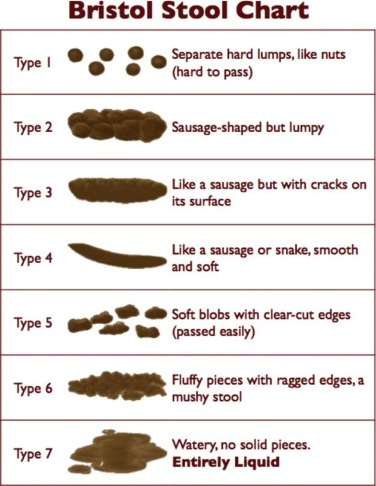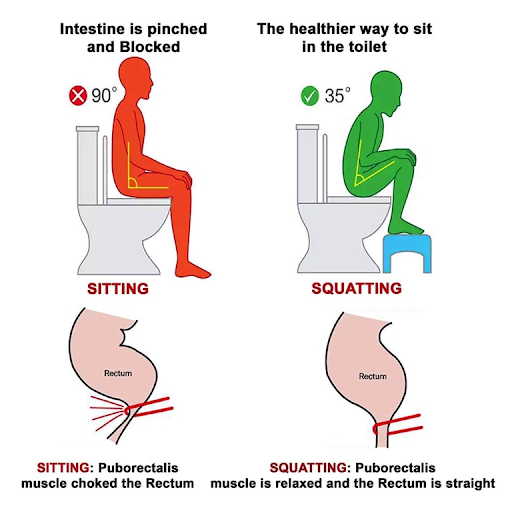Everyone poops! So let’s talk about and how we can make sure it goes smoothly (literally).
What should you know?
Consistency
Use the Bristol Stool Chart to assess the consistency of your stool. Ideally, it should be type 4: well hydrated, well-formed, and easy to pass.
One factor that can influence the consistency is how long it stays in the large intestine, where water is drawn out of the stool. Consitpation can happen when poop stays in the large intestine for too long, too much water is pulled, and it becomes dry and hard (leaning toward type 1). On the other hand, when it moves too quickly, not enough water is drawn out and it is unable to solidify (leaning toward type 7).
Another factor that can affect consistency is dietary fiber. There are 2 types: soluble and insoluble. Soluble fiber can dissolve in water and is found in things like beans and apples. Soluble fiber helps soften hard stool and bulk up loose stool. Insoluble fiber is the “roughage” fiber and is found in things like celery and nuts. This fiber helps move things along through the GI tract. Both types of fibers are important to balance in order to have type 4 stools.
Frequency
You don’t have to go every day in order to have happy, normal poops. Normal frequency can range anywhere from 3 times a day to every 3 days. However, whatever your “normal” is should stay that way and not dramatically fluctuate. You should always feel like you fully empty each time without straining or discomfort.
Ease
Straining, breath-holding, difficulty emptying completely, or pushing hard to pass stool can indicate that there is an issue. The consistency issues mentioned above can cause this, but so can other things. The pelvic floor muscles are tight and difficult to relax, it can be difficult to allow stool to pass. If those muscles are uncoordinated, they may be contracting instead of relaxing, which will also make stool difficult to pass. If you think any of these may be happening to you, a pelvic Physical Therapist can evaluate your pelvic floor muscles to make sure they are not too tight and are able to relax!
Position matters. One thing we can do to make sure poop can come out easier is to elevate our knees. This can be done with a Squatty Potty, a bathroom stool, or even a couple rolls of toilet paper under your feet. When the knees are higher than the hips, pelvic floor muscles relax, letting the poop come out easier. Think about a kink in a hose. This positioning “straightens” the hose (rectum).
Are you having poop problems?
Come see us! We can help you identify behavior and dietary changes that can help you poop better. We can also evaluate your pelvic floor range of motion and coordination to make sure you are able to pass stool without difficulty, as well as mobility of the connective tissue around the GI tract to allow stool to move through easier.


